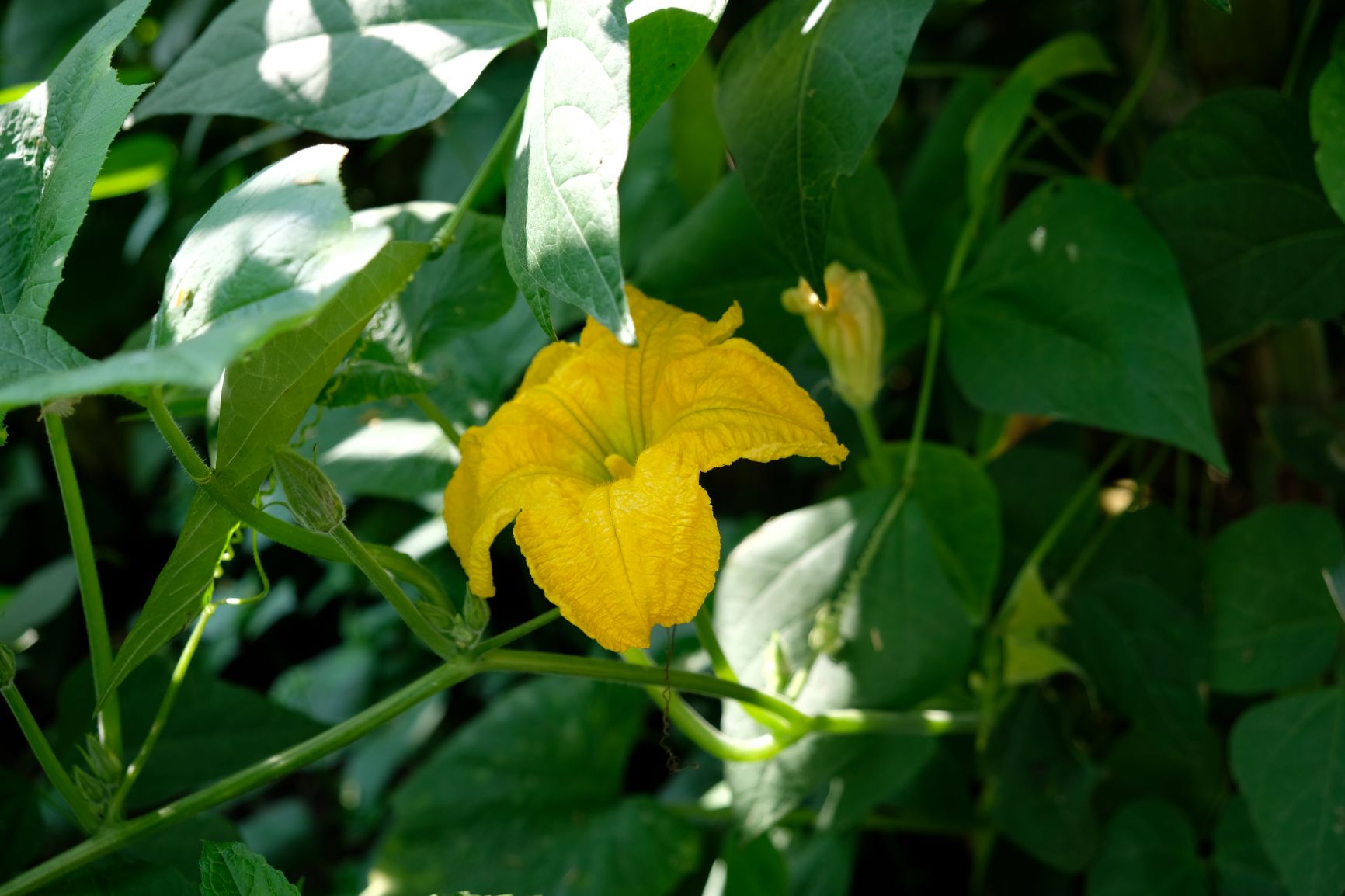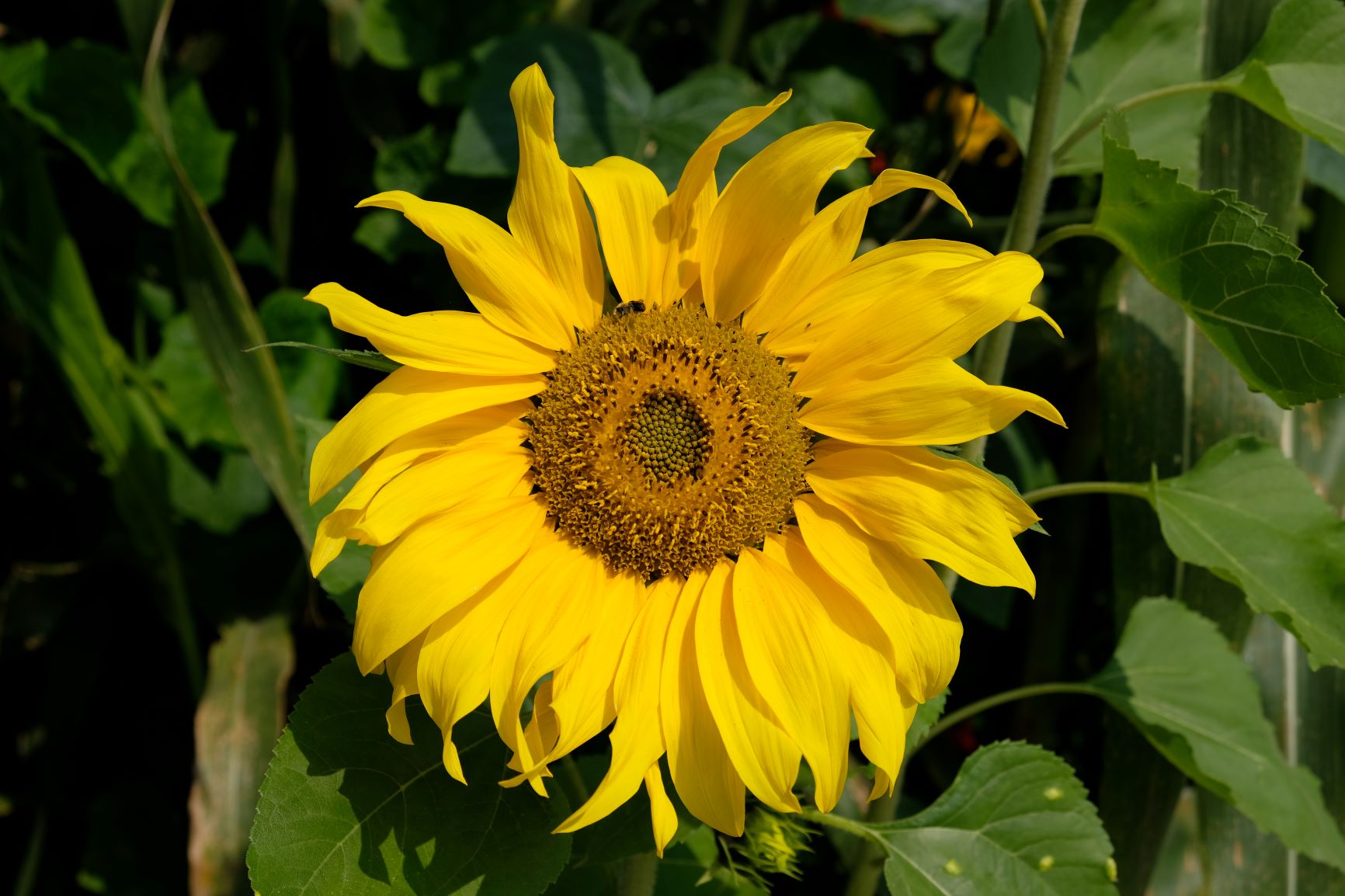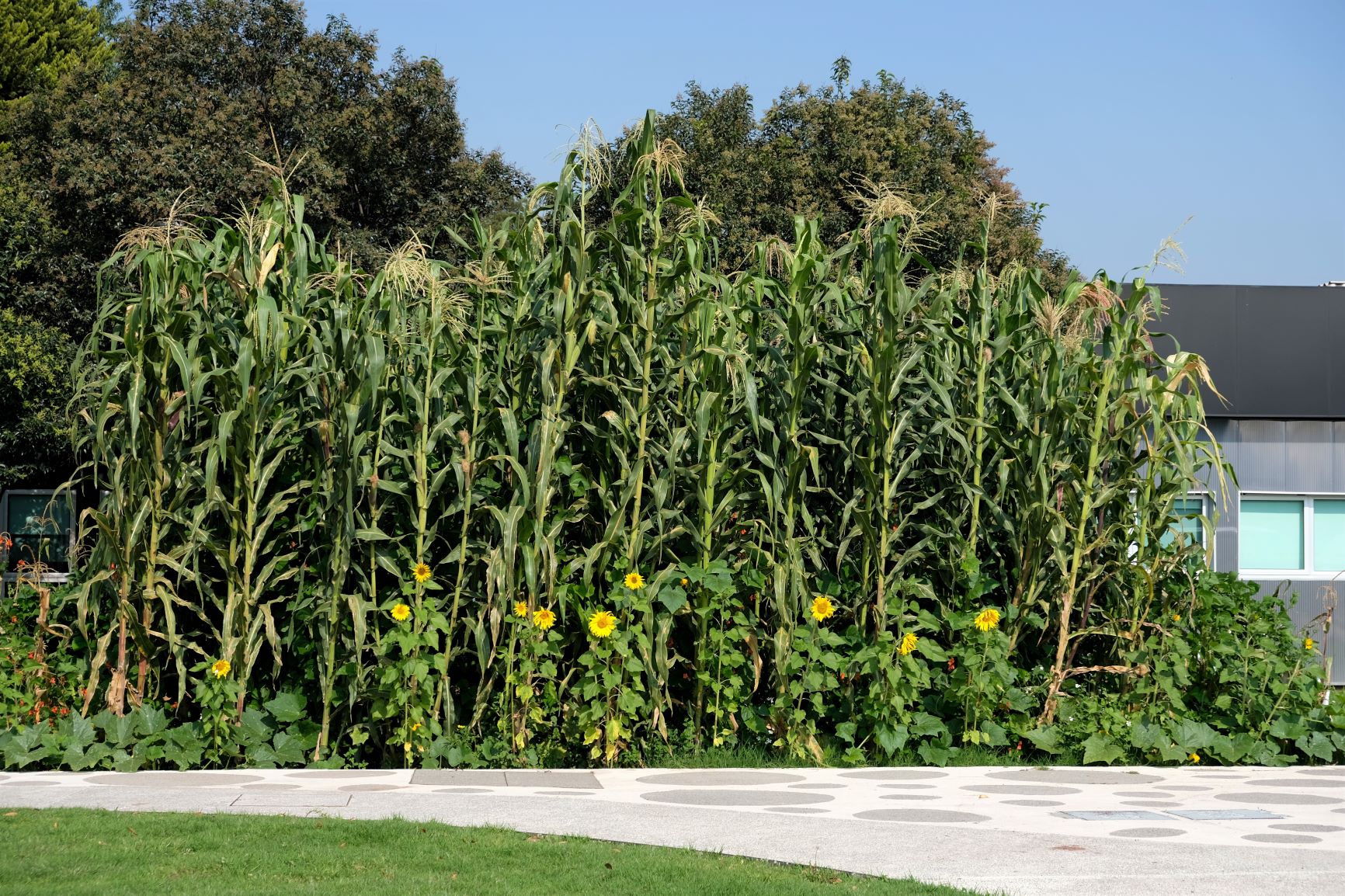
CIMMYT Milpa Demonstration Garden celebrates the culture and history of landraces
by Carolyn Cowan
The ‘Milpa Demonstration Garden’ outside the genebank offices is flourishing this year. Planted and managed by the CIMMYT germplasm bank staff, this project has been providing color and charm at the El Batan campus through the late summer for several years.
The motivation for the project is to provide a talking point that links the rigorous science of CIMMYT’s largely monoculture-based research work with traditional Mesoamerican polyculture, known as milpa. Typically, the milpa agricultural system is centered on three main crops – often termed the ‘three sisters’ – maize, beans and squash.

The milpa polyculture system takes advantage of the natural symbiosis in which these three crops can coexist. The broad, sturdy leaves of the squash plants provide excellent ground cover, keeping weeds at bay; the roots of the beans provide nitrogen fixation, making this essential nutrient available to the other plants; and the maize provides a framework for the others to climb up to access plenty of sunlight.
Many other plants besides maize, beans and squash are often grown in a traditional milpa. Chiles, quelites (different types of leafy plants eaten in Mexico), amaranth, melon, avocado, flowers, and a variety of medicinal plants create a perfect balance for the soil and the human diet. Farmers try to utilize all the products grown in the system to nourish their families and animals.
This years’ CIMMYT milpa garden is a living demonstration of current research themes in the maize germplasm bank and a celebration of landraces. Landraces are native varieties that have evolved under the influence of selection as farmers choose the best maize for their specific environments and uses. This process creates many distinct landraces over the years – at present, there are over 300 unique landraces of maize recorded globally.
Jala maize, a landrace from the Jala valley in the State of Nayarit, Mexico, plays a leading role. Known for producing the largest maize cobs in the world, many of the Jala plants in the milpa garden have reached over 4 meters in height. Indeed, the enormity of the cobs is so celebrated that an annual contest to find the largest cob is held during the mid-August festival in the town of Jala. Denise Costich, head of the maize germplasm bank, has been on the contest’s judging panel for 6 years, and was pleased to see a young man in his teens win the coveted prize this year.
Out of concern for an ageing farming population in Jala and the prospect of there being no young people to continue the Jala legacy, the CIMMYT maize germplasm bank is collaborating with Dr. Carolina Camacho, a colleague in the CIMMYT Socioeconomics Program. Their project is initiating ways to ensure young people are involved in Jala maize farming and can act as guardians of this spectacular landrace into the future.
Other maize landraces featured in the CIMMYT Milpa Garden include Central American landrace popcorns, varieties that researchers from the CIMMYT germplasm bank are studying to determine the genetic basis of expansion volume in popcorn (how much the kernel expands when cooked). In addition to the landrace maize varieties, hybrid popcorn from the USA, beans from the State of Mexico, and pumpkins from Jala and the State of Mexico are being grown. The wild relatives of maize, teosinte and Tripsacum, can also be seen mixed in with the ‘three sisters’, as well as sunflowers.
Below: a gallery of images from the CIMMYT Milpa Demonstration Garden 2018. Photos: C.Cowan/CIMMYT
agriculture, CIMMYT, germplasm bank, Maize, milpa, polyculture





